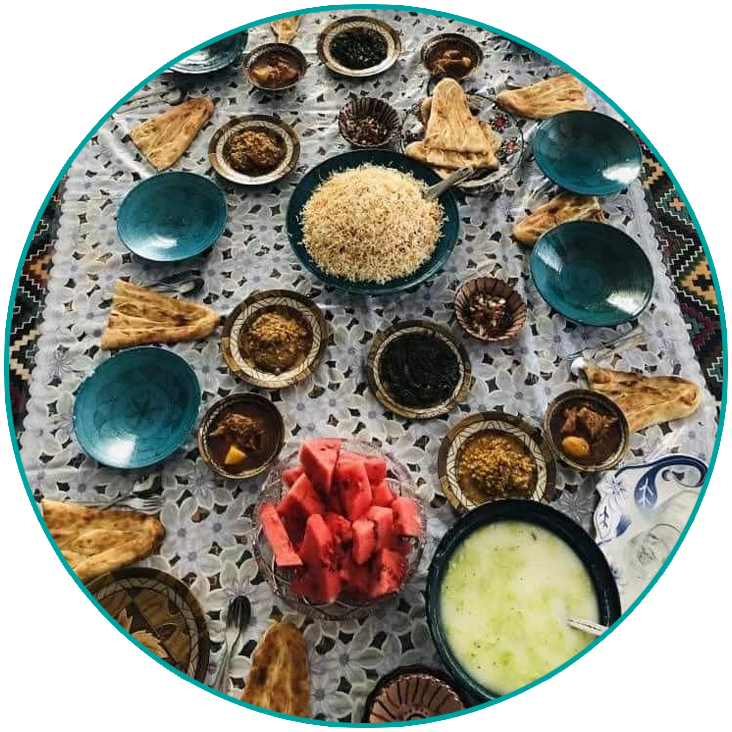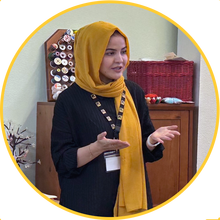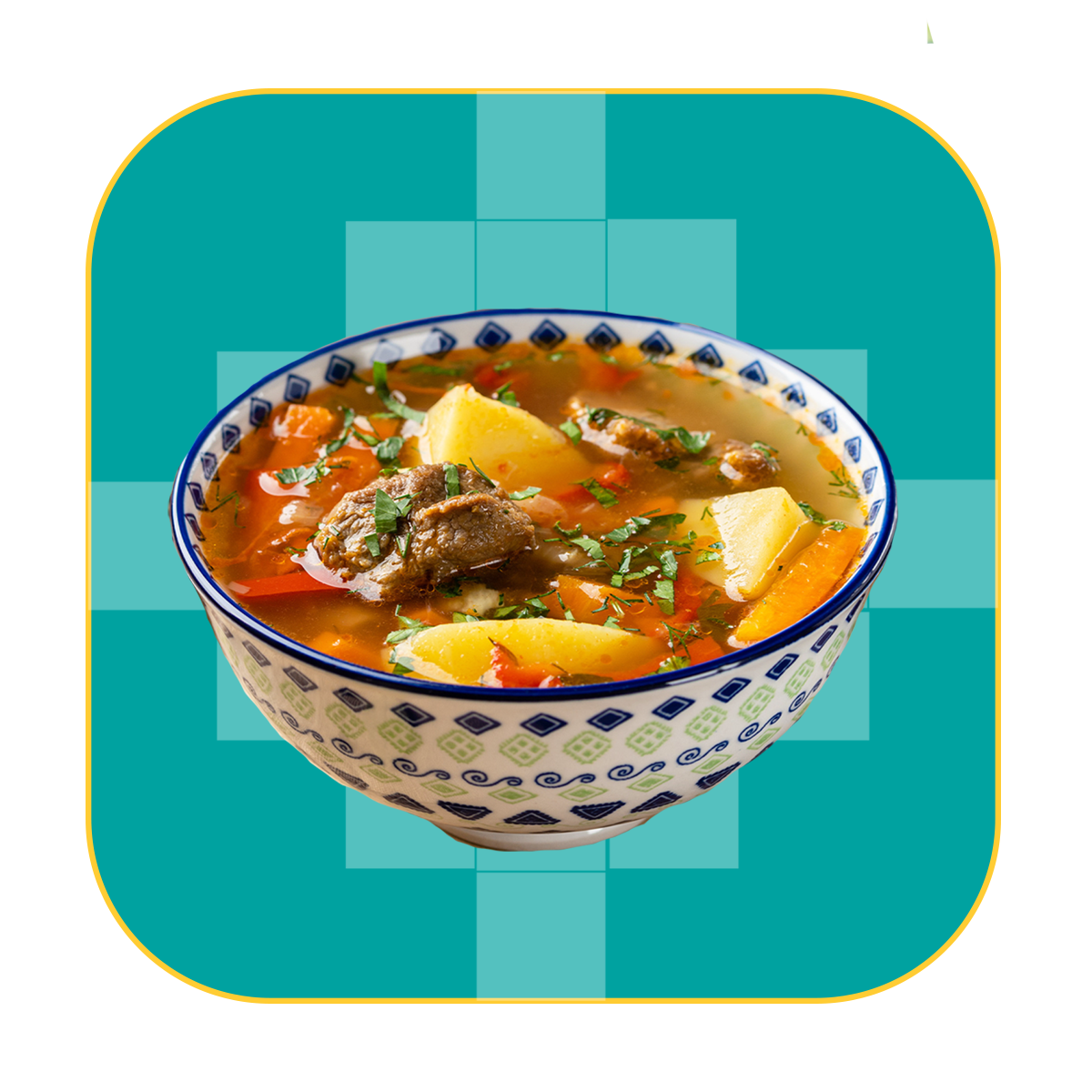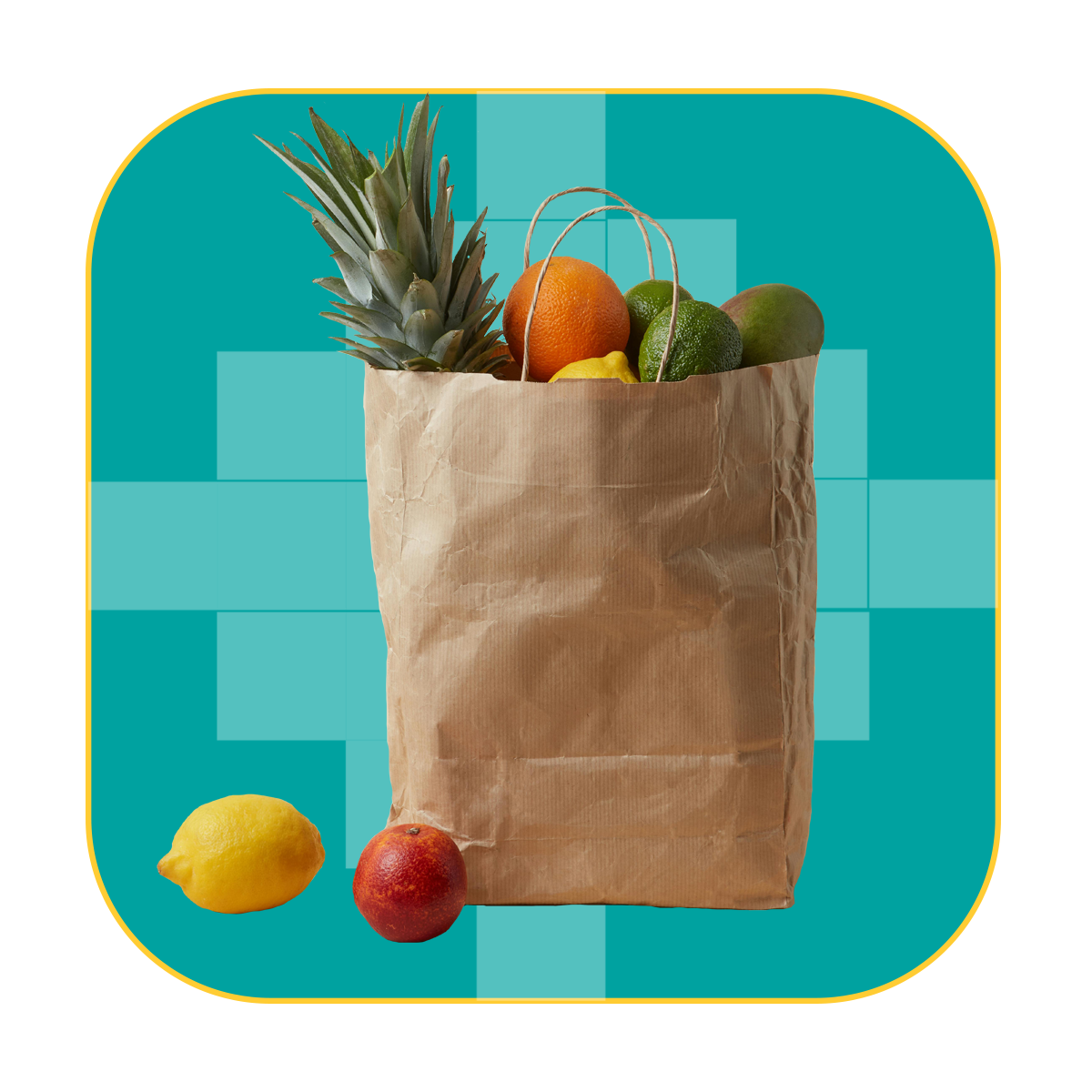Afghan Dastarkhwan: Eating Healthy on a Budget in the United States
In Afghan culture, Dastarkhwan refers to the traditional mat or spread where food is placed. Families sit around it to enjoy their meal and time together. The name was selected to represent the beautiful tapestry of food traditions in Afghan culture and to provide a symbol of home, hope, and celebration.
This toolkit weaves together best practices in nutrition and cultural humility with evidence that nutrition education efforts are most impactful when they respect and include cultural traditions. All materials have been culturally validated and translated from English to Dari and Pashto. The toolkit provides budgeting tips, nutritional education components, and an opportunity to discuss ways to cook healthy recipes.
The food landscape in the United States can be difficult to navigate for newcomers, especially for those less accustomed to Western settings, or for those who have lower literacy levels. One recent study mentions that for Afghan refugees in the U.S., the process of navigating a grocery store was “fear-inducing” and payment systems were “intimidating.”
Service providers can play a key role in supporting food navigation, nutrition education, and budgeting skills as well as providing a safe space for recent arrivals to share their experience and build connections with their peers.
Objectives
- Provide a safe environment to learn about navigating the U.S. food system
- Increase newcomers' knowledge of diet-related conditions
- Educate newcomers on the benefits of eating less highly processed foods
- Offer step-by-step cooking demonstrations of healthy and affordable Afghan recipes
- Introduce the steps of making a food budget and shopping list and why it’s important
- Show newcomers how to navigate savings opportunities in grocery stores
- Orient newcomers on how to read labels and identify key nutrition information
Approaches
We recognize that education is one of several key components to helping improve and perhaps prevent diet-related disease in newcomer communities. Key approaches used in this toolkit include:
Cultural humility
Instead of a top-down approach, we acknowledge the participant as the authority in their culture, life, and practices. Cultural humility is a process that helps service providers see how they can meet participants’ needs and begin building a foundation for a strong and trusting relationship. It does not require the provider to become an expert in the participants’ culture but to be respectful and understanding to open dialogue.
Trauma-informed approaches for nutrition education
This approach recognizes the link between adversity, chronic disease, and nutritional health. It is important to focus on positive knowledge gains that help participants make healthier choices to the best of their ability, without attaching shame or demonizing food practices. Attachment to certain foods or eating practices can be complex and may result from food-related trauma that a person has experienced in the past, or may be still experiencing.
Experiential education
Using "realia" is one of the most effective techniques when working with individuals who are non-native English speakers or pre-literate. Realia refers to real, everyday concrete objects that can be used in the learning setting to build knowledge. The use of realia allows participants to handle objects that provide a multi-sensory experience. This technique can reduce anxiety and stress while enhancing knowledge retention, particularly for audiences with limited or no formal education background.
Social learning theory
Social learning theory focuses on learning through the observation of others. This is especially relevant for families with children, as they are going through a process of acculturation. When families engage in activities that promote healthy behaviors together, such as making nutritious food choices, cooking meals, or exercising, it reinforces a supportive environment. Providing opportunities for participants to include their children in some of the behaviors learned through this educational series can support whole-family nutrition outcomes.
Group class: These videos complement classroom instruction. For instance, the facilitator may show the video during class, and follow up by 1) reviewing key concepts, 2) engaging participants in hands-on experiential activities to reinforce knowledge, and 3) incorporating additional components not included in this toolkit to address the management of specific health conditions like diabetes, high blood pressure, or cholesterol.
Community Health Promotion (CHP): If collaborating with CHP, videos can be sent in advance of a home visit with the client. Similar to the group workshop setting, a conversation can be facilitated around key nutrition and budgeting tips. This can be complemented with hands-on practical activities to build self-efficacy in healthy eating, food budget management, and food system navigation.
Virtual programming: If engaging with participants in a virtual setting, the videos can be shared with or without additional discussion forums around key concepts. However, providing a forum for discussion, client feedback, and questions is preferable for knowledge integration and potentially influencing behavior change outcomes. Including resource guides on SNAP, WIC, Double Up Food Bucks enrollment, locating culturally suitable food locally, and accessing free food resources in the community would also be valuable additions.
Toolkit Download
Get all three parts of the toolkit along with expanded background information in the printable facilitation guide
An introductory lesson focuses on creating rapport with participants, getting to know their local food system, and building awareness of healthy eating and how it can prevent diet-related disease.
A follow-up lesson focuses on tips for staying healthy in the United States by cooking more at home. Participants will learn to recognize foods with many additives so that they can make healthier choices when they shop. They will also share healthy recipes and learn quick tips for making traditional meals healthier by reducing salt, sugar, and oil.
Teaching Tools: | Multimedia Resources: |
First participants explore the importance of a food budget and discover simple ways to start tracking and planning their food expenses. After this first session, participants will be able to set financial priorities for their food budget and use tools to track their food spending.
In the next lesson, participants explore ways to save money when shopping for food in the U.S. and where to access free food resources in the community. After this session, participants will be able to learn how to find coupons and in-store discounts, as well as other free food resources.
Teaching Tools: | Multimedia Resources: |
In the final module participants learn how to meal plan, make a shopping list, and navigate grocery stores for the best deals. They also learn about the five nutrient groups, how to create a healthy plate of food, and how different colored foods affect the body.
The module ends with a Lobia recipe and a story from Rabia, who ate this dish at least once a week during the colder months in Afghanistan. Rabia also offers advice to newly arrived Afghans on how to save money by using traditional Afghan ingredients like beans and lentils instead of meat a few times per week.
Teaching Tools: | Multimedia Resources: |
Video: Navigating Nutrition and Eating Healthy in the United States
Settle In Facebook held a live session for Afghan newcomers about navigating nutrition and eating healthier in the United States. During this event, Settle In provided an overview of nutrition, eating a balanced meal, and eating healthy on a budget. View the event on-demand in English, Dari, and Pashto





